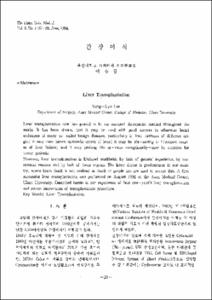한국지역개발의 지역지표를 통한 실증적 분석연구
- Alternative Title
- An Empirical Study to Regional Development in Korea Policy Proposal
- Abstract
- 본 연구는 지역의 개면분석을 통해 지역을 이해하는데 필요한 지표의 의미를 부각시키고 필요한 지표군을 정밀분석하여 한국의 지역개발의 특성과 도시성장의 원인을 추론해 낼 수 있는 지표를 발견, 제시하고 이를 통해 시계열적으로 매년 지속적으로 측정하 수 있는 지표체계를 구축시킴과 동시에 실증적으로 한국의 지역개발상황에 적용하여 지역개발정책에 필요한 관리지침고 정책적 대안책을 제시하는데 연구의 목적이 있다.
이를 위해 11개의 도시를 선정하고 다음과 같은 지역지표체계를 설정하여 실증적 검증을 하였다.
1.지역지리학적 지표와 지역인구학적 지표
2.지역경제학적 지표
3.지역복지및 서어비스지표
4.지역위락 및 문화지표
한국 지역 개발의 지역지표를 통한 실증적 분석에서 발견된 사실들은 다음과 같다.
첫째, 도시의 기능적 특성에 따른 지역개발의 차이가 나타났다.
둘째, 한국의 도시발전은 인구증가와 밀접한 관계를 지니며 인구증가는 자연적 증가요인보다 인뒤 적인 인구이동요인에 의해 크게 좌우된다. 따라서 인구 밀집지역이 도시발전을 촉진시키고 그렇지 못한 지역은 쇠퇴한다.
셋째, 인구억제 및 분산정책, 산업화 정책추진, 교통수단의 변모, 소득수준이 향상, 도시정책에 대한 대국민홍보, 국민의식 변화, 보건복지, 교육정책의 영향들이 도시의 성장에 크게 영향 을 끼친다.
네째, 중부권 개발정책등과 같은 정책적 배려나 행정수도로의 전환과 같은 도시기능의 변화가 지 역발전에 커다란 영향요소로 대두되고 있다.
다섯째, 도시의 재정과 도시성장과는 깊은 상관성을 지닌다.
여섯째, 의료 및 사회복지시설은 도시의 기능적 진화에 따라 증가되고 있으며 대도시 권역을 중심 으로 밀집되어 있다.
일곱째, 위락 및 문화공간이 절대적으로 부족하며 기형적 도시개발에 의해 오히려 감소되는 경향 도 있다.
이러한 분석 결과에 따라 제기되는 잇슈를 해소키 위한 정책적 대안은 다음과 같다.
첫째, 지역개발자원에 대한 분배의 공정성과 형평성의 유지 그리고 지역적 편견에 따른 정책적 배 려들을 배제시키고 국토의 균형화된 발전을 위한 엄밀한 의미에서의 지역적 특성에 맞는 그 러면서도 정책간의 상관성ㅇ르 고려한 균형된 시각의 개발전략을 구상해야한다.
둘째, 양적이고 가시적인 홍보및 선전위주의 지역개발은 배제되어야 하며 현싯점에서 비생산적이 고 비가시적이라 하더라도 미래지향적이고 전향적인 입장에서 긍정적 평가를 받을 수 있는 분야는 개발될 수 있는 질적을 고양된 지역개발정책이 강구되어져야한다.
The purpose of this paper is to analyze the characteristics of the application of indicators to regional development in korea through a survey of the literature, leading to identification of indicator, and to empirical analysis of korean regional development raw data.
This effort to identify and ideographic theory of korean regional and urban studies especially, in the view of the policy sciences, through the analysis of korean regional development trends, by utilizing regional indicators, estends its focus to forecasting the future korean regional development.
1.Regional geographic indicators and regional demographic indicators.
2.Regional economic indicators
3.Regional welfare and service indicators
4.Regional leisure and culture indicators
The results of this analysis indicate as follows:
1.Urban and regional functional characteristics influence to regional development differences
2.Korean urbanization correlates with population growth
3.Urbanization has influence as:
Zero population growth movement, population relocation policy, economic development policy, industrialization, transportation device change, income growth, public relation, citizenship change, medicare, welfare and educational policy, etc.
4. Regional development have influenced by policy bargaining, and urban structure and function change
5.Urban finances correlate with urban growth
6.with urban functional evolvement, medicare and social security facilities are increased, and then these facilities are located densely in the metropolitan area
7.Leisure and cultural space run short because of malfuncional urban development policy.
Finally, some recommendations are drawn
1.Central and local government authoritied concern about equality and fairness of regional development. It is considered the fact that the correlationship among many regional policies are important.
2.Central and local government authoritied descard propaganda and visible performance oriented regional policy. They should pursuit the future oriented regional policy even though it is unvisible and unproductive performance.
The purpose of this paper is to analyze the characteristics of the application of indicators to regional development in korea through a survey of the literature, leading to identification of indicator, and to empirical analysis of korean regional development raw data.
This effort to identify and ideographic theory of korean regional and urban studies especially, in the view of the policy sciences, through the analysis of korean regional development trends, by utilizing regional indicators, estends its focus to forecasting the future korean regional development.
1.Regional geographic indicators and regional demographic indicators.
2.Regional economic indicators
3.Regional welfare and service indicators
4.Regional leisure and culture indicators
The results of this analysis indicate as follows:
1.Urban and regional functional characteristics influence to regional development differences
2.Korean urbanization correlates with population growth
3.Urbanization has influence as:
Zero population growth movement, population relocation policy, economic development policy, industrialization, transportation device change, income growth, public relation, citizenship change, medicare, welfare and educational policy, etc.
4. Regional development have influenced by policy bargaining, and urban structure and function change
5.Urban finances correlate with urban growth
6.with urban functional evolvement, medicare and social security facilities are increased, and then these facilities are located densely in the metropolitan area
7.Leisure and cultural space run short because of malfuncional urban development policy.
Finally, some recommendations are drawn
1.Central and local government authoritied concern about equality and fairness of regional development. It is considered the fact that the correlationship among many regional policies are important.
2.Central and local government authoritied descard propaganda and visible performance oriented regional policy. They should pursuit the future oriented regional policy even though it is unvisible and unproductive performance.
- Issued Date
- 1989
- Type
- Research Laboratory
- Alternative Author(s)
- Lee, Byung-Chul
- Publisher
- 연구논문집
- Language
- kor
- Rights
- 울산대학교 저작물은 저작권에 의해 보호받습니다.
- Citation Volume
- 20
- Citation Number
- 2
- Citation Start Page
- 19
- Citation End Page
- 42
- Appears in Collections:
- Research Laboratory > University of Ulsan Report
- 파일 목록
-
-
Download
 000002023807.pdf
기타 데이터 / 438.91 kB / Adobe PDF
000002023807.pdf
기타 데이터 / 438.91 kB / Adobe PDF
-
Items in Repository are protected by copyright, with all rights reserved, unless otherwise indicated.